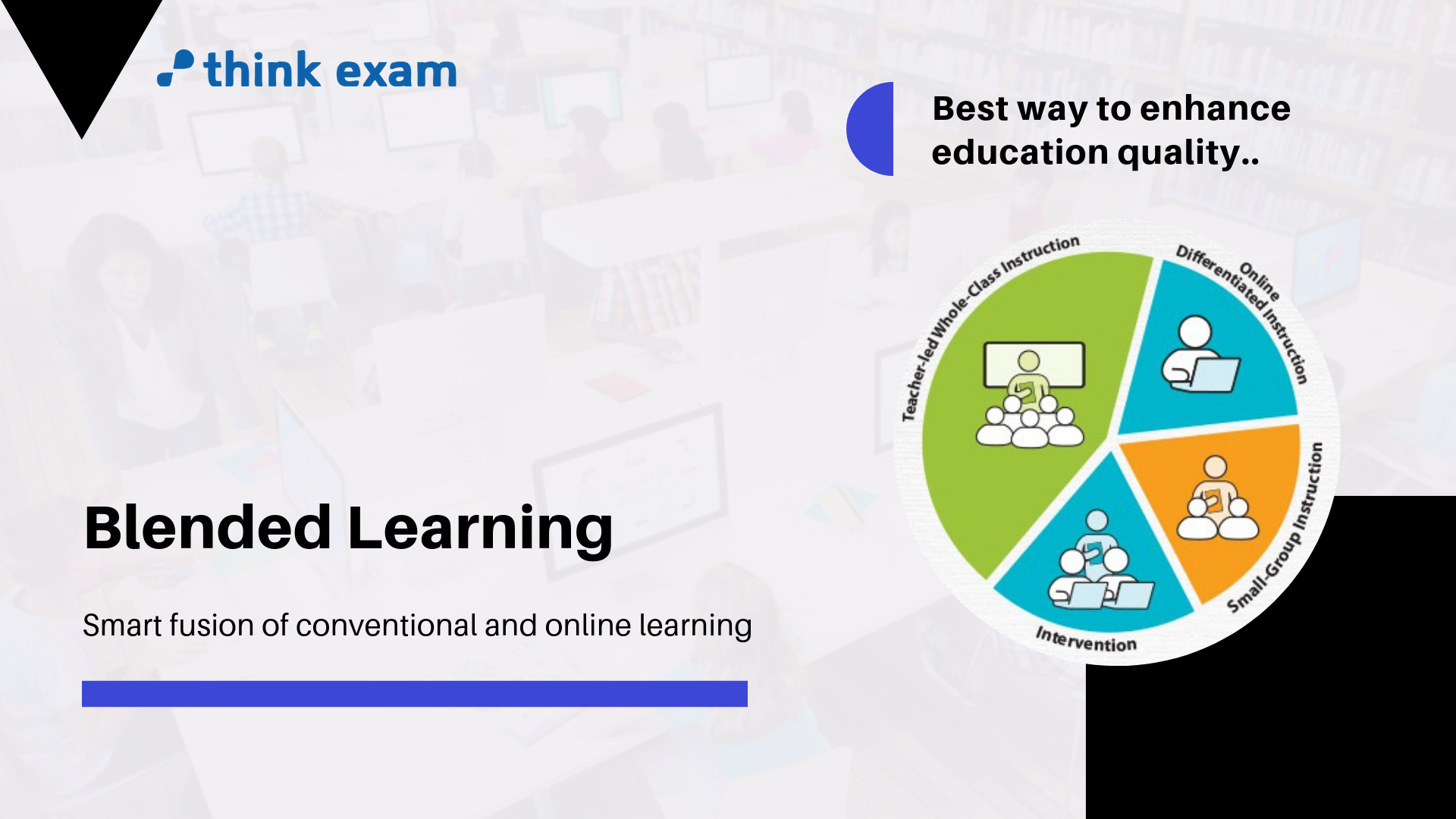“[Blended Learning] provides an opportunity to move from the traditional, rigid teacher- centered classroom to a more open, learner- centered environment”
– Sheri Edwards in Education Week Teacher
Blended or hybrid learning are the terms given to the new age classroom education that hasn’t lost the importance of conventional methods but only made it more enhanced with the integration of technology. When traditional learning is fused along with online instructions then it creates an environment of blended learning.
Followed by a set of models, blended learning is no haywire technique but a systematic methodology that follows rules and is based on proper scientific norms. Blended learning is composed of different types of face-to-face instruction techniques and when they are combined to increase the effectiveness of this approach, they are known as blended learning models.
5 most effective blended learning models
Face-to-face class model
This model is suitable for a diverse classroom setting where students range in terms of performance based on skills and abilities. It is one of the closest models to the conventional teaching method and has been specially designed for students who lack behind in learning sessions. It is integrated with everyday learning methods and includes more online activities that require seat time. In this model, teachers make use of online quiz making platform to create effective quizzes and assignments to be solved from home whereas discussions and group projects are a part of class time.
Flipped learning
The conventional classroom follows a fixed routine; lectures in class and homework activities at home whereas in flipped classroom the routine is completely opposite. Hence, goes the name ‘flipped’. In flipped classroom environment students participate in group work activities such as projects and solving exercises in school and take lessons from online lectures and videos at home.
The rotation model
This model also involves both face-to-face as well as online learning and is composed of three different types of sub-models that are alternatively used to drive learning sessions in a classroom.
-
-
- ⇒ Individual rotation model- This rotational model is different from the station rotation model in a way that it does not involve complete class rotation instead it rotates individual students. The teacher decides the time for how long a student needs to be on an online learning station and when to switch.
-
- Lab rotation model– In this sub-model, computer based test solution and computer labs are used for conducting tests and holding learning sessions.
-
- Station rotation- The students follow a fixed schedule of rotation in which the learning takes place from one online learning station to another. This includes activities such as group projects, individual tutoring, and group instructions.
-
- ⇒ Individual rotation model- This rotational model is different from the station rotation model in a way that it does not involve complete class rotation instead it rotates individual students. The teacher decides the time for how long a student needs to be on an online learning station and when to switch.
-
The self-blend model
This model is not a course-level model; it is a program-level model that is self-driven by students. Students that use this model take extra online courses along with face-to-face courses. Self-blended model does not include any faculty member participation and it is the sole responsibility of the student as to which course needs to be chosen.
Blended online class
In the blended online class model, the students gain most of their learning through online mode. Face-to-face learning only takes place when it is needed.
Factors that need to be thought about before choosing the right model for blended learning
⇒ What is the problem at hand that needs to be solved?
You need to consider the area where the model needs to be integrated like is it needed to solve a problem in a core academic area or in a curriculum that is less demanding and more casual.
⇒ The level of change that you are expecting
If you are looking to implement a blended learning model in the whole school then it needs to follow a different frameset but if you are looking to change the curriculum of just a specific classroom or course then a disruptive model will also fit well.
⇒ How much space you have got to use?
You need to decide if you will be just using the classroom or even adding up a computer lab. If you have got a larger space to use then you can go for various blended learning models at once but if not then alternate application of space-restricted models is possible.
⇒ How many devices with internet connections are available?
In online learning, the most important tool that is used is internet-enabled devices. When deciding the type of model you need to integrate, the most important criterion is to have enough devices with internet connectivity. With the limitation of devices, you can opt for rotational models whereas with enough devices for every student you can go for any type of model.
Conclusion
To decide upon which blended learning model to use, the best way is to get your hands on every possible model and experience its characteristics in real-time. Only then you would know how to mix and match different models and combine them to work in your favor. Be equipped with all sorts of Edtech tools such as online assessment platform and online quiz-making platforms, to enhance the application of any model.
Simplifying and automating the quizzing and assessment process is an integral part as they create the base of any blended learning model. Once you have followed all of these essential steps, you would be able to experience the benefits of the instructional model.








